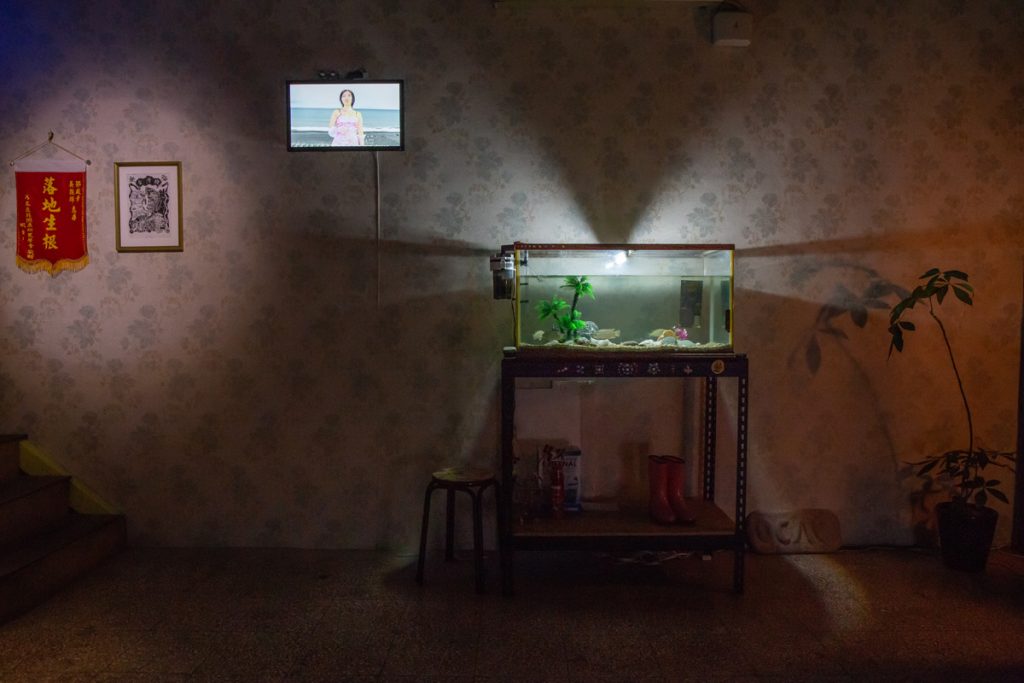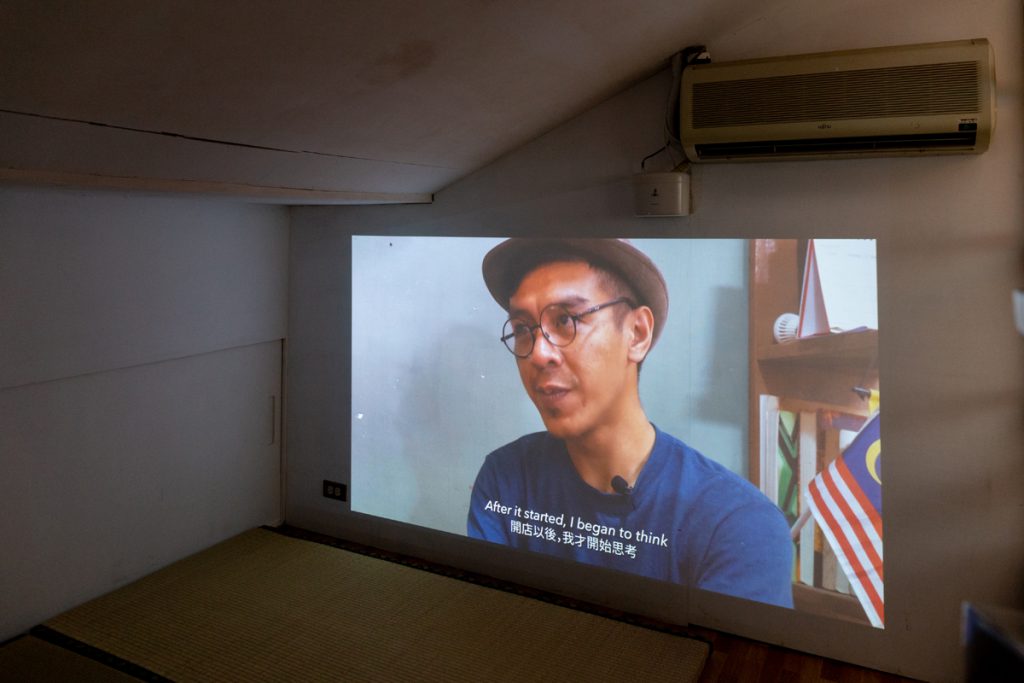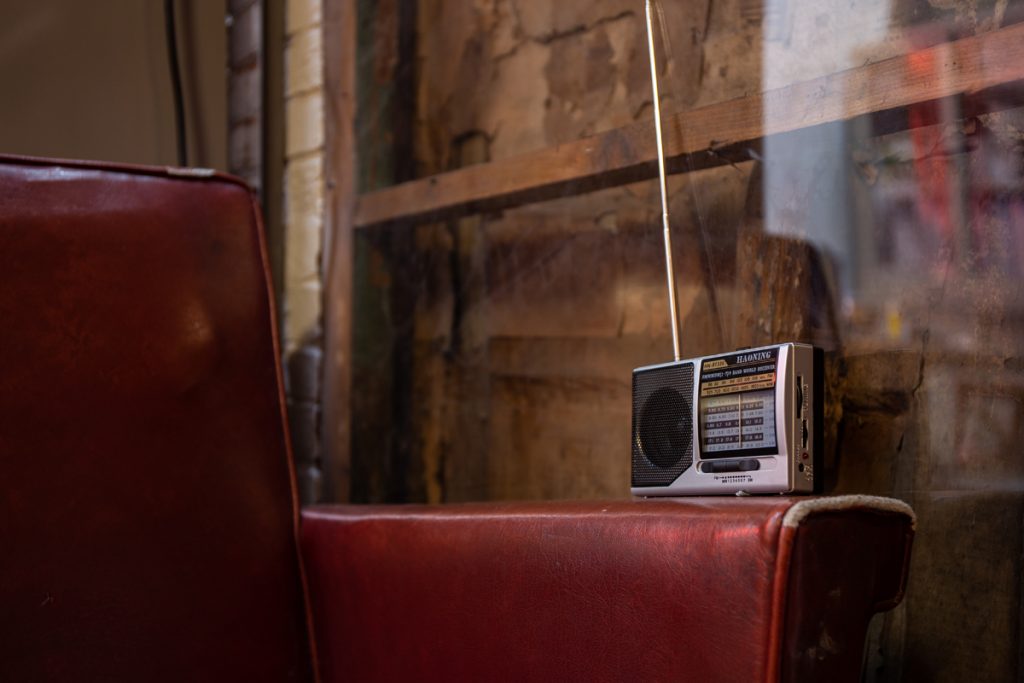Browse

I. PETAMU Project and Nusantara Archive
The word “PETAMU” is taken from the colloquial use of “your map” (peta kamu) in the Malay language. In this project, we attempt to use the lingua franca (here refers to Malay) of the Malay archipelago (Nusantara) as a prelude, to put forward an alternative diameter and methodology in engaging the map of Southeast Asia, as the working method of the Nusantara Archive (註1). Such exhibition making approach combines the ongoing and commoning practices of OCAC and No Man’s Land(註2) in the region from 2015 to 2018. These four groups of artists in the PETAMU Project, made up by Hoo Fan Chon (Malaysia) and Tseng Zi-Yi (Taiwan); Jeffrey Lim (Malaysia) and Posak Jodian (Taiwan); Nusantara Archive collaborated with two separate groups of artists, who are Syafiatudina (Indonesia) and Wu Chi-Yu (Taiwan). Collectively, they initiate a set of Nusantara methodologies covering the Malay Peninsula, Borneo, Indonesia, and Singapore, as entry points to further expand continuous dialogues.
Nusantara Archive is a publishing project based on No Man’s Land Residency & Nusantara Archive Project (2017,05 – ) that includes the translations and collaborative writings between NML and the artists. These eponymous publications are currently being exhibited at the Hong-gah Museum from Aug 25th 2018. Since 2015, the artists of Nusantara Archive and OCAC although they began their journey with the same map, they have each travelled different routes and arrived at various destinations. The PETAMU Project compiles these diverse groups of works and writings, to project them onto the map they started with. This project uses window display as a metaphor for transduction, to chart an alternative spatial boundary mapping reference, to allow the viewers’ to navigate through different boundaries in accessing local contexts. As such, the initial imaginations of the artists-in-residence will be crystallized under a specific spatial context to activate the sense of locality within the agency of the map.
II. The Urge for a Sense of Locality
Since 2011, OCAC and the Thai curator duo, Jiandyin initiated a dialogue between Taiwan and Southeast Asia contemporary art communities. The dialogue is based on the relationships between each individual artist and the exchanges between art and alternative space to deepen the cultural understanding among one another. However, if we were to revisit at OCAC’s past projects, one will observe this approach was stemmed from OCAC’s own self-reflective nature of being a contemporary art space since their formative years. Between 2011 to 2017, apart from projects in Thailand, Indonesia, Cambodia and other places, this approach also indirectly respond the sense of locality (topos) within the project, Post.O – The Reverse of TOPOS in 2009 (which also marks the move of their physical space from Banqiao to city center).(註3)
The phenomenon of globalization is increasingly affecting the cultural landscape we are immersed in, to understand the sense of “topos” outside the way of institutional thinking, it does not only mean its essence needs defending urgently, nor it is referring to the marginalised. It is a creative force of “topos making” (except from Post.O – The Reverse of TOPOS exhibition text)

In other words, from Post.O’s atypical temporary exhibition space to the ThaiTai:
A Measure of Understanding in Chinatown of Bangkok in 2012, the coalition of Southeast Asia art spaces, Co-Temporary Forum in 2016 and subsequent engagement with Yogyakarta’s art community in 2017, through various forms of official systems and spatial limitation, the sense of locality was no longer a quest for the continuity of the Earth’s surface, but a way to create a contemporary sense of locality. In order to create a practical dimension for the a sense of locality and to provide entry points for the he exchange between local and foreign practitioners, OCAC, as an alternative institution, as they march towards their third decade of operation, there is a unprecedented sense of urgency for their precarious future and the increasingly fragmented globalized present. The international competitiveness that spun from neoliberalism, the tension during the process of institutional centralization within the region of Southeast Asia and the spread of political extremism, put our belief systems, desires or even our stance for national identity to test, when we engage with Southeast Asia or in any other form of exchange.
The PETAMU Project aims to prompt a revived way in understanding the past localities, and its most important task is to nudge out a physical spatial opening in order to put a spiritual mapping approach in practice. In this four groups of artists, Posak Jodian accompanied and assisted in planning Jeffrey Lim’s route of exploration for the project, “KANTA Portraits” (since its inception from the Malay Peninsula, Borneo) to Xindian, Hualien and Orchid Island’s indigenous villages; while Wu Chi Yu’s visit to Malay Independent Bookstores in Kota Bharu, the capital of Kelantan(註4), where he interviewed Zaidi Musa of Kedai Hitam Putih and Ezzmer Daruh of Kitartb during NML Residency & Nusantara Archive Project was facilitated by Malaysian artist Okui Lala. In order to avoid self-absorption in the process of self-othering, one should focus on the reflexive reading of the working relationships; compared to simply illustrating the work of practitioners in romanticized project proposals, it is more pertinent to mutually reflect on our own “post-coloniality”.(註5)
III. From Mapping to the Act of Listening
The way of engaging mapping leads us to Benedict’s Anderson’s The Imagined Community: Reflections on the Origin and Spread of Nationalism (1991 revised version). In the seventh chapter “The Last Wave”, he observed that the Southeast Asia’s official nationalism was originated from the colonial administration’s institutionalization and codification process through census, map and museum, from reimagining the colonised land to its subjects, to construct its self image. In assimilating the three aforementioned processes, is it possible to negotiate for a pre-nationalist Nusantara spiritual space? The case here is not just about mapping, there is also Syafiatudina’s proposal, which is being adapted into the “Audio Tour for 228 Peace Memorial Park”(註6) by Nusantara Archive in cooperation with the National Taiwan Museum. The script explores the Taiwan Expo held by the Japanese colonial government in 1935, which was staged in New Park / National Taiwan Museum. Through the voices of international student, migrant worker, and artist, it exposes the interconnecting narratives between the colonies and the “Outer Nanyang” region (including the Malay Archipelago).
How to clarify the relationship between colonialism and official nationalism? — not only we want to resist the imaginations that have been imposed on the colonies but to avoid readily accepting the biased national ideologies in the process of constructing narratives within the region. Perhaps, we should be conscious of the autonomy of the active-thinking subject, its subjectivity gives prominence to the concept of modernity, while actively participating in the makeup of regional narrative, it gives light to the underexposed areas of the modern map making process. In order to acknowledge the voices of the lesser exposed, we go back and forth between the processes of telling and listening, the “has been” and the “will become”, until we manage to form a balance dialoguing platform between the diverse individuals. This inter-subjectivity is akin to the act of transcribing the concept and experience of Post.O, waiting to be activated by future readers; and we are like transiting travellers, exploring the historical oblivions on the map, including our own.

The shift in the PETAMU Project which initially involved some of the artists in the residency programme of the Malay archipelago and the subsequent pairing of practitioners and locales not only aims to posit a range of aesthetic methodologies, in order to ensure the notion of topos can be presented in a more objective manner, but also to oscillate the position the observer and the observed. For instance, Hoo Fon Chon’s choice in preparing a Asam Laksa with Tilapia last year and the recent Tilapia music video he collaborated with the musician Tseng Zi-Yi, by streaming through the internet it proposes a reversed history reading process, while both of the works seemingly extend the creative production of art residency programme. Finally, could this map that was initiated by the practitioners (peta kami; not including the listeners) be shared with the listeners in order to become a map that belong to us (peta kita; including the listeners), as a way to foreground our collaborative series of undertakings in order to spark the urge for a sense of locality, in a creative force of “topos making”. In short, through the act of listening and mapmaking process, collectively we aim to posit an ideal future based on the forgotten past.